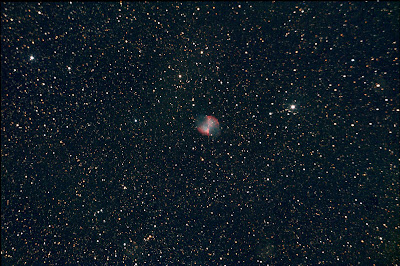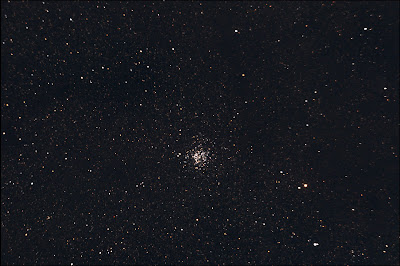M27 - The Dumbbell NebulaA favorite of amateur astronomers, this planetary nebula in the constellation Vulpecula is easily visible as a faint, hourglass-shaped smudge in small telescopes and binoculars. Planetary nebulae result when older stars, unable to sustain their mass, blow off their outer layers, whose gas and dust expand outward, forming often spherical shaped clouds (hence the name, planetary nebulae). This process is called a nova. The dying star's core then contracts to form a white dwarf star, a diminutive remnant of its former glory. White dwarfs can continue to shine for billions of years. The Dumbbell Nebula is located about 1,300 light years from Earth. Astronomers estimate that M27 formed about 14,600 years ago.

The above image comprises 12, three minute subexposures, for a total exposure time of 36 minutes.
Located about 5,000 light years from Earth, the Lagoon Nebula is a large emission nebula that appears in the constellation Sagittarius. Like M27, it is easily visible in small telescopes and binoculars. The nebula contains a number of dark clouds, called Bok Globules, in which proto-stars are thought to form. M8 appears in a particularly rich starfield; another famed emission nebula, M20, can be found just north of it.

This image was composed from 15, three minute subexposures, for a total exposure time of 45 minutes.
This is a bright emission nebula that appears in the constellation Sagittarius. Astronomers estimate the nebula to be about 15 light years in diameter, though it appears to be part of a much larger cloud of interstellar material. It is located around 5,000 light years from Earth.

The above image is a 24 minute exposure.
 This is a twelve minute exposure.
This is a twelve minute exposure.

